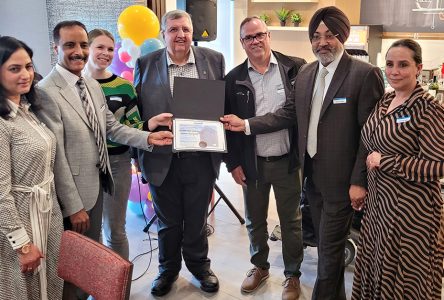Recent changes by the Ford government to billing for phone and video doctors’ appointments are disproportionately affecting transgender and gender diverse populations.
Trans men and women who live in rural areas and smaller cities like Cornwall often struggle to find doctors who will treat them. As a result, they turn to virtual services or travel to bigger cities like Ottawa and Toronto for healthcare.
“I am a transgender woman here in Cornwall and I have been under the care of the ConnectClinic in Toronto by way of virtual doctors meeting up until now. That began last February. It’s going to be a year next month since I’ve begun treatment,” Alanis, 61, told Seaway News.
Alanis’ doctor in Cornwall refused to oversee her transition, stating that it was too complicated.
“He didn’t have the time nor the expertise to understand the ‘cocktail of drugs’ he called it. Now, here’s the thing about the cocktail of drugs… its two pills,” Alanis explained.
The first pill, called spironolactone, suppresses testosterone. The second pill, estradiol (estrogen), does most of the feminization.
Because she cannot find a local doctor who will prescribe her medications, Alanis will soon be left without her Hormone Replacement Therapy (HRT), putting a halt to the transitioning process after a year. Suddenly ending hormone therapy can be life-threatening, not to mention the other physical and mental repercussions that come from stopping medication mid-transition.
“This coming September, I will no longer be able to get my medications or healthcare from my doctor in Toronto because both the Ontario Government – under the stewardship of our oppressive premier, Doug Ford, and the Ontario Medical Association which he oversees – has decided that they no longer want to pay the doctors as much for virtual care visits as they do for in-person visits,” she said.
ConnectClinic is offering in-person appointments to replace virtual care, but for many patients – including Alanis, who does not drive or own a car – the cost of travelling to Toronto is prohibitive.
The Seaway Valley Community Health Centre (SVCHC) has been involved in efforts to support training more local primary care providers in gender affirming care, but most are at capacity.
SVCHC is a partner on the Champlain Regional Planning Table for Gender Diverse Health, a group of community members and service providers working to improve trans, two spirit, non-binary, intersex and gender diverse health in Ottawa and the surrounding areas.
“Seaway Valley Community Health Centre is aware of the inequities for those who wish to access gender affirming care in our area,” said Executive Director, Erin Killoran, “While SVCHC providers (Nurse Practitioners and Family Physicians) are able to support our clients with gender affirming care including HRT, we currently have a waitlist for all clients of approximately two years. Prior to the change in virtual billing, SVCHC referred community members without a primary care provider seeking gender affirming care to ConnectClinic as well as Centretown Community Health Centre in Ottawa. (Please note Centretown CHC has temporarily paused referrals).”




